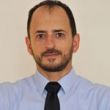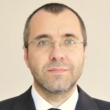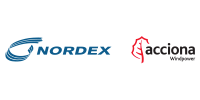17:00 - 18:30 Making wind fit for the power system of the future
Integrating wind power into the electricity market


Room: Hall F
In 2015 wind power accounted for 44% of all new power installations across Europe – more than any other technology. Wind power covers 12% of Europe’s electricity demand. In 2030, wind power could serve a quarter of the EU’s electricity needs and be the backbone of Europe’s energy system. This has and will have a major impact on how future energy systems operate. The wind power industry plays a fundamental role in this transition. This session will look at the challenges and opportunities this presents and give examples on how wind can support the energy transition.
You attended this session?
Learning objectives
- Understand how large offshore wind power plants can contribute to overall system stability and take over ancillary services from conventional thermal power plants;
- Learn how to safely estimate the capacity reserve that an offshore power plant can offer in the ancillary service market;
- Discover potential disruptive technical solutions and emerging business models which may facilitate a proliferation of variable renewables;
- Understand the implementation of grid code compliance certification to address the new harmonised grid codes across Europe.


Presenter

Co-authors:
Alexandre Oudalov (1) F Yaman Evrenosoglu (1) Adamantios Marinakis (1) Adrian Timbus (2)
(1) ABB Switzerland Ltd., Baden, Switzerland (2) ABB Ltd., Zurich, Switzerland
Presenter's biography
Biographies are supplied directly by presenters at WindEurope Summit 2016 and are published here uneditedDr. Oudalov has been working in the renewables research for almost 15 years. He is currently a senior principal scientist at the ABB Corporate Research Center in Baden, Switzerland. He studied electrical power systems at the Swiss Federal Institute of Technology in Lausanne, Switzerland. His current research is focused on techno-economic modeling and assessment of future power grids with high proliferation of variable renewables at different system levels.
Abstract
Challenges of integrating variable RES
Introduction
Global power balance is tipping irreversibly towards renewables driven by the decreasing technology costs, and governmental subsidies. Renewables are expected to constitute 50% of global power generation in 2040. The main growth is foreseen in vRES (wind and solar). This fundamental transformation of the power supply chain results in two major challenges for traditional utilities:
- Managing highly variable and unpredictable renewable sources in T&D grids while preserving secure, reliable and stable power supply.
- Gross revenue loss due to distributed energy resources (DER)and other renewable energy independent producers as well as customers embracing energy efficiency.
Approach
We have developed a techno-economic analysis framework for the assessment of main challenges of integrating vRES. The analysis starts with a collection of regional data and a creation of scenarios followed by technical feasibility studies and sensitivity analysis. The results recommend a cost optimal set of integration technologies and operation strategies for each particular scenario.
Main body of abstract
We made a technical impact assessment for increasing levels of hourly vRES proliferation. The highest hourly penetration in Germany reached 84% in 2015. Our analysis shows that Germany will experience higher than 100% hourly vRES penetration within the next 5 years.
Our assessment shows that sufficient operating reserves and transmission grid capacity is essential to accommodate hourly vRES penetration within the 25-50% zone.
In order to reach 50-75% zone of vRES generation, the system operator has to ensure that aggregated system inertia doesn’t decrease to levels which will jeopardize the system stability in case of a disturbance. In addition, the operator has to take into account the resources for voltage support.
Entering into the critical zone of 75% can be facilitated by assuring that the grid has sufficient short circuit power to sustain a fault.
100% and above levels of penetrations are only possible with strong interconnections for exporting, energy storage or a combination of these.
We summarize technologies which can help to address a temporal and spatial mismatch by enhancing system flexibility.
The traditional generation, transmission and distribution businesses have been commodity-based via sales in kWh, driven by asset ownership. The emergence of DER-centered environment creates new markets for integrators, energy service providers, and new types of utilities which are active in DER and operations. These new markets and their associated business models allow all participants/ players in the energy and grid sector to contribute to a sustainable and greener power production, and a reliable power transmission and distribution. One promising business model is based on a deregulated retail market, in which DER owners participate. The distribution utility may enable a successful realization of such a concept by providing a reliable electric infrastructure and by balancing the possible temporal mismatches between generation and demand. Another business model is based on aggregation and operation of DER. The resulting aggregated source is usually referred to as “virtual power plant” and can participate in energy market or ancillary service markets if appropriate aggregating platforms exist. German government took legislative action and provided seed funding opportunities to promote the participation of aggregators in reserve markets in order to promote the proliferation of DER such as wind and solar farms, biomass and biogas plants.
We will present two practical example of how a deployment of new technologies (HVDC subsea link between Ireland and U.K.) and emerging business models (virtual power plant platform in Germany) result in a cost effective integration of variable RES. We will analyze main benefits of these new technologies in integrating RES.
Conclusion
The presentation provides a comprehensive overview of main technical and economic challenges faced by the power industry due to a proliferation of vRES (in a centralized and distributed form) and illustrates disruptive technologies and business models which are important for a seamless and cost effective integration of these resources at different power system levels.
Learning objectives
Main challenges and disruptive technical solutions and emerging business models which may facilitate a proliferation of variable renewables.





Follow EWEA on: